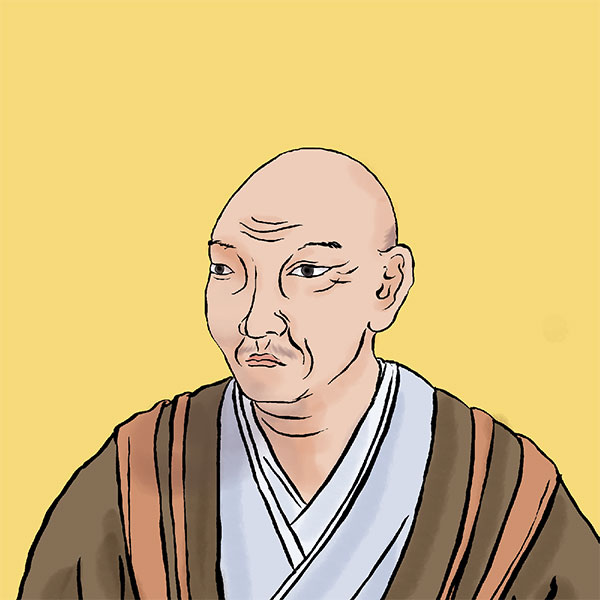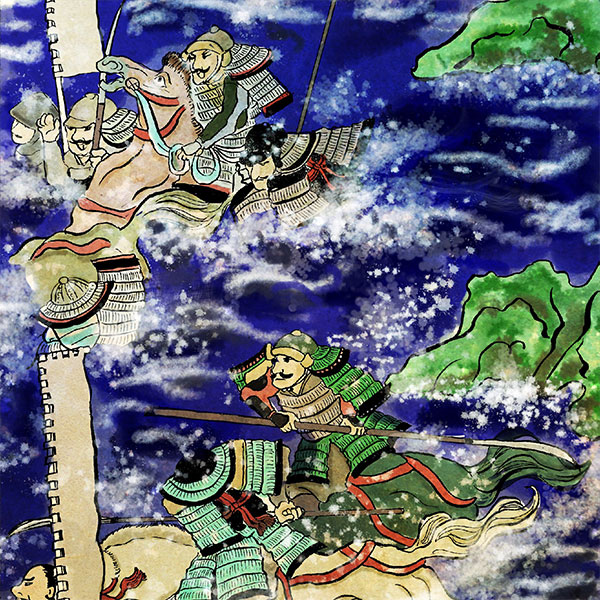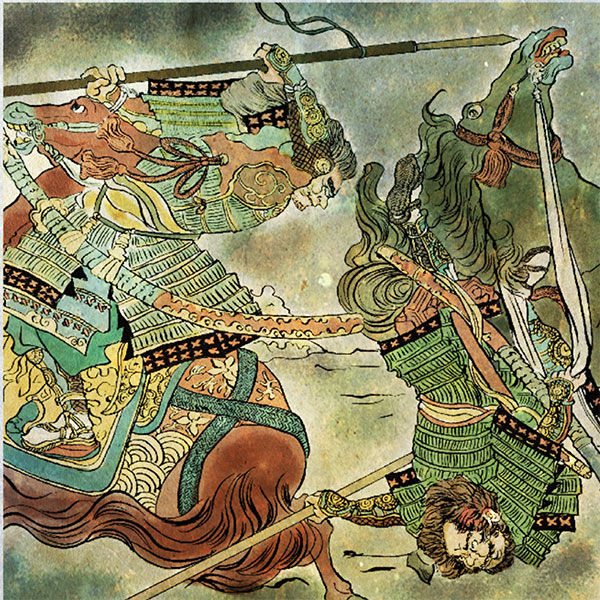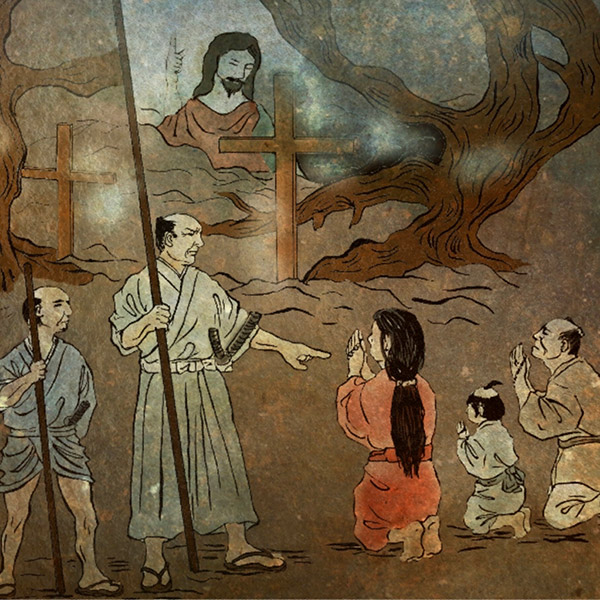Otomo Sorin (2/2)The most famous military commander of the Otomo clan

Otomo Sourin
- Article category
- biography
- name
- Otomo Sorin (1530-1587)
- place of birth
- Oita Prefecture
- Related castles

Usuki Castle
- related incident
From New Year's Day to February 18, 1576, Sourin passed on the headship of the family to his eldest son, Yoshimune, and retired; however, until around Tensho 5, Sourin and Yoshimune ruled jointly. .
In July 1578, just before he left for battle in Hyuga Province, Sorin was baptized by the missionary Francisco Cabral, took his baptismal name ``Don Francisco,'' and officially became a Christian. From then on, he used ``Furan'' as his signature in letters addressed to his vassals.
It is thought that Sorin's reason for converting was not the content of his faith, but the actual income he could earn by becoming a believer.
In the 5th year of Tensho (1577), Yoshihisa Shimazu of Satsuma Province began an invasion of Hyuga Province, and the Otomo clan fought against it, and Sourin also went to war, but in the 6th year of Tensho (1578), the Otomo clan suffered a crushing defeat at the Battle of Mimikawa. We lost many senior ministers.
After the Battle of Mimikawa, rebellions of local people occurred one after another in various parts of Otomo territory, and the territory of the Otomo clan was eroded by the expansion of the influence of Yoshihisa Shimazu, Takanobu Ryuzoji, Tanemi Akizuki, and others. Sorin asked Oda Nobunaga, who had become a powerful force in Honshu, to not only mediate peace with the Shimazu clan, but also to cooperate when Nobunaga invaded the Chugoku region. These disappeared during the Honnoji Incident in 1582.
In 1586, Sourin headed to Kamigata and had an audience with Hideyoshi Toyotomi, who was promoting unification policy at the central government, at Osaka Castle. Sorin begs for military support in exchange for the Otomo clan becoming affiliated with Toyotomi.
In 1587, the army of Terumoto Mori, Hideie Ukita, and Tsugujun Miyabe, who had arrived earlier in Kokura, Buzen Province, joined forces with Hidenaga Toyotomi, and the main force of Hideyoshi Toyotomi entered Kyushu, totaling 10 troops. Ten thousand troops land in Kyushu (Kyushu pacification). On April 17th of the same year, in the battle between Toyotomi Hideyoshi's army and Shimazu Yoshihisa's army at Hyuga Kunine Shirasaka (Battle of Nejirasaka), 10,000 troops led by the fort's garrison, Tsugujun Miyabe, attacked the dry moat. The Shimazu army was unable to break through and the battle line was in a stalemate, but the 500 men of Todo Takatora under Toyotomi Hidenaga and Togawa Tatsuyasu under Ukita Hideie were able to defend the fort firmly using wooden walls and wooden walls. The troops go to rescue Miyabe and clash with the Shimazu army. The Shimazu army was routed with heavy losses, including the deaths of Tadayoshi Shimazu and Nobumitsu Saruwatari. This battle solidified Hideyoshi's efforts to pacify Kyushu, and also saved the Otomo clan, which was in dire straits.
After the subjugation of Kyushu, Yoshimune was relieved of Bungo Province by Hideyoshi's orders, and Hideyoshi was about to give Hyuga Province to Sourin, but Sourin, who had lost his desire to rule, either declined the offer or died shortly before. It is said that. Sorin fell ill as the war situation suddenly turned around, and died in Tsukumi, Bungo Province, just before Yoshihisa Shimazu's surrender. He passed away at the age of 58.
Usuki Castle
It is said that in 1561, Otomo Sourin, who was defeated in a battle with the Mori clan, built a new castle on Nyujima Island in Usuki Bay in the following year, 1562, and moved from Otomokan in Oita Prefecture. Ta. However, on October 29, 1557, a letter sent by the missionary Gaspar Villera to the Jesuits states that the Jesuits moved to Nyujima in order to avoid a rebellion by their vassals (the ``surname conflict incident'' by Nobumoto Ohara and others). Although there are no historical documents that confirm the exact date, it is believed that Yoshishige himself moved his base to Usuki around the third year of Koji (1557).
According to the records of the missionary Luis Frois, many Christian facilities were built near the castle, and there was also a chapel within the castle. Afterwards, the government office was returned to the prefecture for about two years from 1579 to suppress the rebellion of Tawara Chikansuki, but this was a temporary measure, and it is thought that the headquarters remained in Usuki until the change of the Otomo clan. It is being
In 1586, when the Shimazu army invaded (Battle of Nyujima Castle), they repelled the Shimazu army by mobilizing the Franchi cannon, a cannon acquired from Portugal, which was called a ``defeat of the country''. However, both the castle and its surrounding area suffered heavy losses. The following year, Sorin passed away.
In 1966 (Showa 41), it was designated as a historic site of Oita Prefecture, and in 2001 (Heisei 13), the Daimon Yagura, which corresponds to the Ninomaru Otemon Gate, was restored as a wooden structure. In 2017 (Heisei 29), it was selected as one of Japan's top 100 castles (number 193).
Sorinko Festival
In late October, an event is held to convey information about the local hero, Lord Otomo Sourin, and his era to the whole country as a new attraction, and to convey various achievements and historical facts to many people.
In addition to stage events such as the Otomo Sourin Gun Corps, dance performances, live performances by Daichi Jinta and Daichi Kanno, Tsurusaki dance performances, jazz performances, kagura, and drum performances, there are also food stalls and other activities, making it a lively event.
Otomo Sorin Cemetery Park
The area around Tsukumi City is the final resting place of Otomo Sourin, a military commander known as a Christian daimyo during the Sengoku period who swept through Kyushu for a period of time. In the cedar grove adjacent to the park, the grave of Lord Sourin (a city-designated historic site) and a new Christian-style tomb designed by architect Arata Isozaki were built, creating a solemn atmosphere. Masu.
The park is full of greenery, with cherry blossoms blooming in the spring and colorful leaves in the fall, so you can enjoy a walk and think of Sorin. It is a popular place for residents and history buffs to relax.
Reread Otomo Sourin's article
- related incident

- WriterTomoyo Hazuki(Writer)I have loved history and geography since my student days, and have enjoyed visiting historical sites, temples and shrines, and researching ancient documents. He is especially strong in medieval Japanese history and European history in world history, and has read a wide range of things, including primary sources and historical entertainment novels. There are so many favorite military commanders and castles that I can't name them, but I especially like Hisashi Matsunaga and Mitsuhide Akechi, and when it comes to castles, I like Hikone Castle and Fushimi Castle. Once you start talking about the lives of warlords and the history of castles, there's a side of you that can't stop talking about them.






